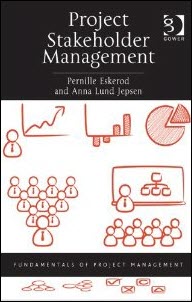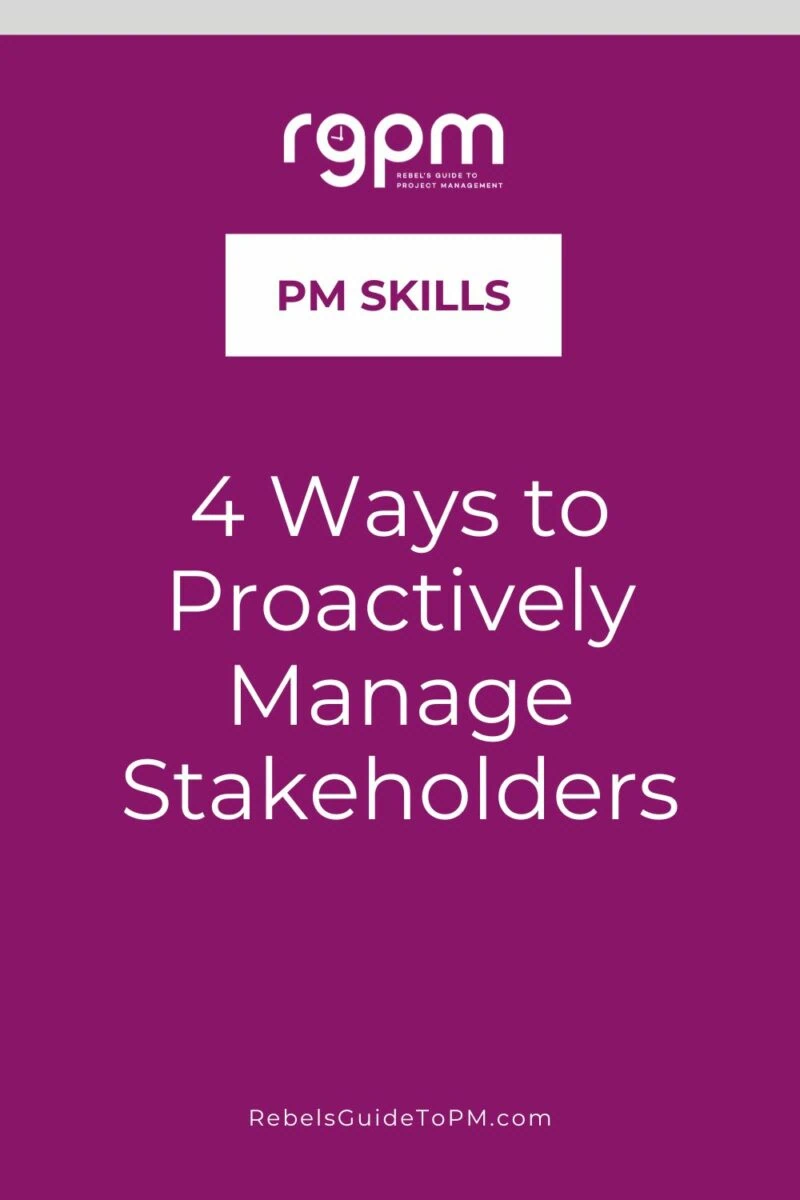4 ways to proactively manage stakeholders
This blog is reader-supported. When you purchase something through an affiliate link on this site, I may earn some coffee money. Thanks! Learn more.

Stakeholder management seems to stay a hot topic regardless of what year we’re in. I think it’s been that way since A Guide to the Project Management Body of Knowledge (PMBOK® Guide) finally included a tenth knowledge area on managing stakeholders (although in my mind, stakeholders were important to the project management profession way before PMI wrote it into the book).
Working with people is never going to go out of fashion, and when it was first published, Pernille Eskerod and Anna Lund Jepsen’s book, Project Stakeholder Management, was timely. It remains relevant today.
In the book, they argue that proactive stakeholder management is far better than adopting a reactive ‘wait and see’ approach. I completely agree, so much so that I wrote the APM’s guide to stakeholder engagement (which is how we talk about this work today — ditching the ‘management’ moniker).
Eskerod and Jespen set out 4 ways to proactively manage stakeholders in their book. These are:
- Sustain their position
- Change their attitude
- Activate their help potential
- Reduce their harm potential
Let’s look at each of these in turn and see how they could affect stakeholder plans for your project.
1. Sustain their position
Stakeholders who already feel positively about the project need to stay feeling that way. Eskerod and Jepsen suggest you do this by keeping them informed, acknowledging their position on the project, and ‘engaging’ them.
You can do this through project newsletters, providing information and inviting them along to relevant meetings. It shouldn’t be too difficult to keep someone who is already keen about the project feeling that way. The key thing is not to neglect them, as this can lead to their interest waning.
2. Change their attitude
Stakeholders who feel negatively about the project present a different set of challenges for a project manager. You obviously want them to be involved, but not in a negative way.
If they have a key position, such as controlling resources, they can be a real roadblock to the success of the project, so you should invest some effort in trying to change their attitude and move them towards feeling positively about the project.
Eskerod and Jepsen suggest that you do this through talking to them about the consequences of their behaviour, although I would add that you’ll have to do this sensitively.
You can address their expectations, the benefits of the project, and the relevance that the project has to them personally and professionally. In other words, use all your wily ways to convince them that the project is A Very Good Thing.
Techniques to use to do this are talking (face-to-face is better), inviting them along to workshops so they’ll hear all the great stuff about the project, and giving them a formal role on the project so they feel involved, relevant and important. It all sounds like pandering to their egos to me, but if it works, it works.
Read next: How to engage project stakeholders with good communication
3. Activate their help potential
Help potential is how much a stakeholder has it in their power to help you. Any type of stakeholder, whether they feel positively or negatively about the project, could help you in some way and it’s important to be able to tap into that when you need it.
Some ways that you can do this include telling them what you want (sounds obvious, but sometimes people are so busy with their own stuff that they don’t realize how to help) and using “power-based pressure”. I expect this latter only works with people you can throw you weight around with.
Alternatively, you could get someone higher up than them, such as their manager, to ask them to help out. Eskerod and Jepsen also suggest that you can make it look more appropriate for them to help – in other words, point out that someone in their position really should be helping this project and it is a completely logical and appropriate thing for them to do.
To get these stakeholders off their backsides and helping out as they should be, you can give them clear instructions, get them involved with people who are already modelling the kind of behaviour you want to see, and invite them to be involved in project planning.
4. Reduce their harm potential
Harm potential is the opposite of help potential. It’s the extent to which a stakeholder has the power to mess up your project. Even stakeholders who feel positively about the project could do something stupid and present a problem, so harm potential isn’t limited to those stakeholders who are generally disengaged.
There are a few things you can do to prevent stakeholders doing anything too damaging to your project. Eskerod and Jepsen suggest trying to reduce the amount of power a stakeholder has over your project, although I think that would be very difficult, especially if the person you are trying to influence is your sponsor.
They also recommend another take on this, by building your own power base. I expect that extends to supporting the growth of power base of other stakeholders. Again, I’m sure this is easier to say than do. Finally, they suggest that you identify some substitute stakeholders, so that if someone does step out of line you can replace them.
That sounds a bit harsh to me, and again difficult to do without the support of your manager, sponsor or Project Management Office. But worth considering as a tactic if you really have to.

Reflection
Reducing the harm potential of stakeholders is a balancing act. The techniques Eskerod and Jepsen recommend are networking (I’m not exactly sure how this will help) and relying on contributions from a number of people, thus minimizing the amount of power any individual stakeholder has.
These four ways of proactively managing stakeholders will take some thought, a bit of practice, and probably a fair amount of luck. Have you tried to use any of these techniques? What success did you have?
This book review first appeared on the website in 2013 and has been lightly updated to keep it relevant.

